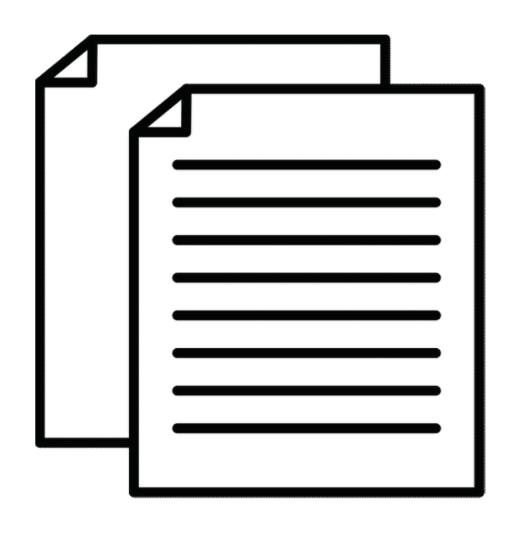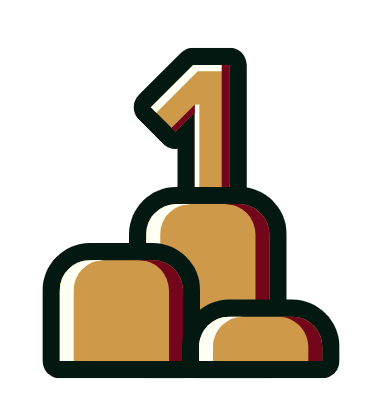Let’s address your burning freelance questions
One thing I love about the writing community is the openness to asking questions and the willingness to share stories. We really don’t see one another as competitors but rather as cohorts, here to support one another’s work and offer advice where we can. There is enough space for all of us: creative writers, editors, proofreaders, content marketers, etc.
The freelancing world, in general, is like that. When I was first setting up shop, I treated local bookbinding artist Katie Gonzalez of linenlaid&felt to coffee to learn how she made it all work. The very beginning of setting up a freelance career makes one feel stumped. I had so many basic questions for her, like about invoicing and maximizing your day, not to mention how to find clients.
Her advice was invaluable, but even more so, her enthusiastic availability helped embolden me. A fellow maker wanted to help me achieve my goals and be seen by others as I already saw myself? Hell, yes!
Image: Annett Malgo, Unsplash
Let’s hit some FAQs about how to start freelancing with a couple of other writers I know.
Structure your day for freelance writing success
Bobby Shriver: How do you organize and prioritize your day? I wrestle with knowing sometimes how to best utilize and divide up my time each day as I look to be productive and organized. What were the most important tasks you did in your early days to help you become successful? I'm really wanting to maximize my time well as I get started.
I really lean into what works best with my body clock and attention span. That means I sit down as early as possible to go through emails, sign contracts, check in with clients, etc. It doesn’t look the same every day, and that can be discouraging since we’re accustomed to routines and schedules — some days, I'm only sending follow-up emails, while other days, I’m knee-deep in writing a client’s ebook. And still other days, it’s only self-marketing. I tell myself that mornings are for working, and that’s the most pressure I put on myself. I try to be the boss I need and want.
Quite often with freelancing, “working” means working on your website, not client work. It’s adding new projects to your portfolio (which I did this morning), implementing a new freelance website design, drafting and scheduling tweets, cold emailing, and more. Self-marketing is easily 60% of my day, if not more. Frankly, I dislike it, but the better organized you are, the more appealing you’ll be to prospective clients.
I don’t have the data to back this up, but I also feel like I looked more professional once I bought my domains, www.katielewiscreative.com and www.kathryndlewis.com, and the email katie@kathryndlewis.com, through Squarespace. You might also consider becoming an LLC to legitimize your business and protect yourself. (I did!)
Create a freelance writing portfolio
Katie Davis: Even if my undergraduate and master’s degree is not exactly in an editing-related field (English, journalism, writing, etc.), how should I build a successful portfolio?
All you need is one good clip, one good project, and then market the hell out of it.
Last year, I ghostwrote a blog post for a relatively well-known tech company, and I shared that link around like nobody’s business: on Twitter, in LinkedIn messages, in cold pitches, etc. That’s the one work example I used to generate more business.
Have links like this that you’re proud of ready to go upon request so you don’t have to dig to find related examples.
If you’re super-green — read: fresh outta school or first entering the freelance world — think about the skills best suited to the type of work you want to do. If you can already write well, you’re a step ahead. But other marketable attributes you can talk up might include:
remote work: the ability to successfully work autonomously, which is clutch for contract workers
timeliness: maybe you’ve worked somewhere with tight deadlines or quarter-end goals
tech familiarity: Trello, Slack, ClickUp, and the like — companies have their preferred communication methods, and seamlessly integrating makes you more appealing
writing examples: OK, this one seems obvious, but prospective clients want proof you can write. Yet your portfolio doesn’t have to include paid work: Share links to your Medium essays, articles you wrote for your school paper, letters to the editor, blog posts, etc.
One lil’ thing:
DON’T WORK FOR FREE. You can build up your portfolio by volunteering with nonprofits or charities close to your heart, but for Pete’s sake and yours, don’t offer up your time, work, and expertise for free to potential clients who could actually afford to pay you.
You might, though, consider trading services. Bartering, if you will. You need lots of pieces in place:
A professional website
Headshot
Graphics
Images
Social media presence
An accountant or accounting software
The list goes on. If you’re a magical unicorn who specializes in ALL THE THINGS, great! You’re set up for success. Cool. See ya.
But more likely, one of the above necessities feels daunting to you, while your ability to write and edit is completely foreign to someone else. Find that person who is also starting out in, say, their photography career and offer to write or edit their website content if they’ll take photos for your own site.
OK, so here’s where I walk back what I just said: you don’t actually need to have a professional website. Yep, I’ve got one, and many other folks do, too, but surprisingly, almost every prospect I’ve cold emailed this quarter has specifically asked for my LinkedIn profile. Luckily, I recently updated mine after refreshing a client’s LinkedIn profile, so I felt confident sharing my link. Whether or not your potential clients will also want your LinkedIn profile, I suggest getting yours into tip-top shape now.
It’s also simply good practice in retelling your own story. You need your elevator pitch, one-paragraph history, and comprehensive CV, so shaping your professional story and experience to be told in multiple ways is an excellent exercise.
A note as I reflect on that above list: it’s worth it to set up all this admin stuff early on. Once the foundation is in place, you can build upon it without needing to scramble and throw together an invoice last-minute. Take the time to get your materials and process into place before soliciting your first client.
Managing new freelance clients and opportunities
Bobby Shriver: What have been your most effective strategies for generating new business and new client relationships? I'm in that season where I'm seeking clients to serve so my freelance career can be sustainable, so any advice on how to find connections to the right people is helpful. I don't have a natural referral system for leads yet.
Katie Davis: Building off that, what kinds of places should I pursue editorial and publishing opportunities for a beginning editing position?
Early on, when I was hoping to transition from working for someone else to working for myself, I would take on work through the site Thumbtack for super cheap. And by “super cheap,” I mean I’d create someone’s resume for them for $20. 🤯 It was the pits, but this happened to be my route to 1, gain client relationship experience; 2, add projects to my own resume; and 3 (and perhaps most crucially), gather client feedback. I’d ask if they’d mind sharing feedback about our collaboration for me to add to my website, vouching for my skills.
I don’t use Thumbtack anymore, but I do still occasionally use other marketplaces. It’s a mixed bag, with freelancers having mixed experiences, but my experiences have mostly been great. (More about it in this blog post. I also briefly used LinkedIn ProFinder.)
As you’re establishing that new client relationship, you’ll look and feel more professional if you ask for:
A creative brief: This shows the client has thought through the project and isn’t just bringing you on to bounce ideas off of — which is terribly time-consuming, not very productive, and often uncompensated work.
The deadline: By when do they need this absolutely, 100% done? Once you know that, set an earlier deadline for yourself, because you guys, SOMETHING ALWAYS COMES UP. The client forgets to let you know they’ll be on an island and unreachable for two weeks or your kid catches the flu or a tornado rips through your neighborhood and you lose power for eight days (that last one’s a true story).
Their budget: If your prices aren’t listed online and they haven’t purchased a specific writing/editing package from you, ask them upfront what budget you need to work within. This way, it’s also clear if they go beyond expectations and you need to add on an additional service offering, at cost.
The collaboration process: Make it clear how you and the client will work together. They might want to work within a collaborative Google doc, where they can insert comments and notes for you to be more efficient with time, or perhaps they want to be totally hands-off and receive a PDF at the project’s end. There should be no questions from either end about what this process will look like once you sign the contract.
Invoicing and payment: What software will you use for invoicing? How frequently are invoices sent for a longer or ongoing project? Where do they want the invoice sent? When do you require payment?
These five steps show that you know your stuff when it comes to running your business. It helps the client have confidence in you as a pro, legitimizes your business, and covers your tracks (aka makes sure you get paid 💵).
Talk about what you love
Katie Davis: What inspired you to create a platform to assist other writers in learning more about their writing processes?
A friend, photographer, and fellow business owner Adriane Smith recommended starting a blog many moons ago. I initially scoffed, thinking if would take away from time I could spend building up my business or writing creatively — then, duh, it landed for me:
Writing a blog accomplishes both of these.
I really love reading about writing and writing about writing. So many, if not most, of my essays are born of personal experience, and then I think I could create a shortcut for other writers by sharing the lesson. For example:
Figuring out how to format manuscript submissions for literary agents
Regularly running into the same issues with creative writing clients
Making money as a freelance writer
Bobby Shriver: What type of writing has been your "bread and butter" for your freelance business? There are many different types of writing deliverables out there, and I'd really like to focus on writing deliverables that have good income potential and are often in demand from clients.
You’ll make more money writing website content, but that also means you’ll be on the hunt for clients in the midst of a website design, and that isn’t everyone. Having a good mix of talents (web content, social posts, email copywriting, etc.) diversifies your appeal.
But honestly? Lean into the type of writing from which you get the most joy. I don’t like writing social posts, so I don’t even offer social media marketing. I’ve also scaled way back on the number of resumes and cover letters I create, as they’re a lot of work for not enough money, and it’s rare that they’ll turn into repeat clients.
When figuring out which type of work should be your specialty, ask yourself:
Do I want ongoing projects with the same clients? If so, seek out companies who are filling out their content schedule with a regular group of freelancers/contract workers.
Pro: the pay is regular, and you stay busy.
Con: it’s the same type of work, over and over.
Do I like the diversity of one-off projects? In this case, you need clear work with a start and end: a website redesign, email marketing series, ebook, marketing brochure, etc.
Pro: you stay engaged because the topics and formats change.
Con: transactional projects are often one and done, meaning you could experience work lulls if you don’t schedule back-to-back projects.
Do I just want to make some dough? No shame in this, BTW. In my experience, the highest paid gigs are the one-off projects, like 5,000-word marketing pieces.
Pro: making bank. These deliver a higher amount of money in a shorter amount of time.
Con: you’re again risking a lull when the project’s complete, so be sure you’re still seeking other work to fill out your schedule while this project is going on.
Watch for the opportunity
Katie Davis: As someone who is thinking about getting started in editing, what do you think is the best first step?
The best way to move from writing to editing is to start by writing. Fulfill your copywriting services for your client, yet keep your ears open for key phrases to upsell them. That might be something like:
Our older content isn’t as strong as it could be.
The CEO feels like his/her blog posts aren’t resonating.
It seems like our email newsletters could be strengthened.
In these cases, the client has produced the written work but needs help refining it. Adding on an editing component means increased income for you! When you’re reading blog posts, in particular, look for those written (or, unbeknownst to you, ghostwritten) by a specific person at the company. They want to maintain their voice and speak directly to consumers, but they certainly don’t want to look goofy. If you notice a paragraph that could be stronger or, even better, an error, reach out via a cold email and point it out. Then mention how you offer editing services in addition to copywriting and you have availability in your schedule to help — wouldn’t you know it? — today.
Also, don’t be shy: position yourself as an editor. Include that label on your website, social media accounts, LinkedIn profile, email signature, face-to-face introductions, etc.
You might also be interested in:
Want to receive news and blog posts straight to your inbox?
Sign up here!
As a special gift, you'll receive my free study on the 10 biggest mistakes writers make (and how to fix them).







